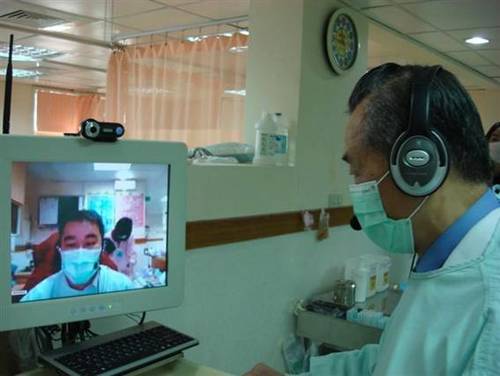HIMSS18 – What, Where and How HealthIT can impact healthcare1

With the annual #HIMSS18 conference just a few weeks away, most of the industry’s attention is turning to matters relating to technology, cyber security and the regulations around HealthIT. We thought it would be fitting, therefore, to team up with the wonderful folks at @HIMSS for a tweetchat focused on technology and healthcare.
I am a fan of artificial intelligence, machine learning and virtual reality (even though I cannot physically use VR for more than 2 minutes at a time). However, the technology that I’m most intrigued by is 3D printing – specifically the 3D printing of organs and organic material.
First, there is the impact this technology could have on solving hunger and nutrition. Imagine if we could “print” healthy food in places where growing it is difficult or where shipping it is cost-prohibitive. Imagine also if we could print foods that are personalized to each person’s unique metabolism and dietary needs. The impact on public health would be significant and worldwide.
A long time ago I read a science fiction novel that talked about the advent of this type of technology: Gateway by Fredrick Pohl. The novel made frequent mention of something called CHON-food. Pohl imagined a world where CHON machines were able to replicate food by combining four key elements: carbon, hydrogen, oxygen and nitrogen. The advent of these machines helped to solve world hunger and ended many of the wars for water and food that that plagued the Earth. I hope we are at the start of CHON revolution.
Second, there is the impact of 3D printing on surgery and transplants. Researchers are very close to being able to print human skin using organic printers that can be used in reconstructive surgeries. The impact this technology could have on burn patients would be incredible. So too could the impact on patients that need a transplant. According to UNOS, every ten minutes someone is added to the national transplant waiting list and on average 20 people die each day while waiting for a transplant. With organ-printing technology these premature deaths might be prevented. Using tissue samples, organs can be printed to exactly match the patient’s physiology. Bonus: no more worries about organ rejection.
I’ve got my eye on 3D printing and over the next few years I expect it to have an impact beyond technologies like AI, machine learning and analytics. However, it’s going to take time for this technology to mature. In the meantime, there are certain areas of healthcare that can use a little boost TODAY.
Patient engagement and behavior change is an area of healthcare I hope #HealthIT will be able to help. Patients are the most untapped resource available to healthcare. Despite all the trackers, portals and video tutorials, health literacy remains extremely low. Some would argue that the widespread adoption of EHRs had even contributed to patient dis-engagement as doctors and nurses spend more time staring at screens rather than speaking to patients about their health. I see a golden opportunity in healthcare for patient engagement technology.
In the early 90s, the field of behavioral economics took shape. Richard Thaler, the University of Chicago professor who recently won the Nobel Memorial Prize in Economic Sciences, began publishing a series of papers that combined psychology and economics. His work led many to begin studying the ways that human behavior influences financial decisions. We need to apply those same theories to healthcare and design #HealthIT systems that nudge patients (and clinicians) into healthier behaviors.
I am incredibly excited about the future of healthcare. I am certain we are making progress towards a brighter day for patients, doctors, nurses, family caregivers and administrators. As I walk the #HIMSS18 exhibit hall I will be on the hunt for companies that share this outlook and whose products show clear signs of patient/provider design input.
from Tumblr http://ift.tt/2Ghdk0k
via IFTTT